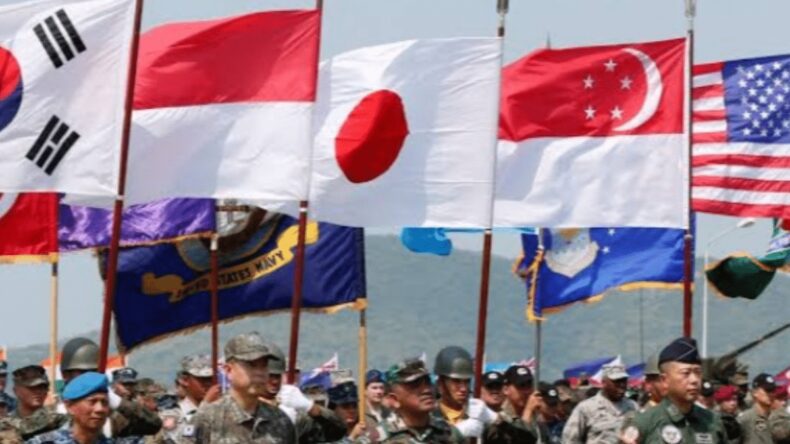American forces and their allies in Asia are battle-ready after years of joint combat exercises, against potential Asian aggressors like China and North Korea, said Major Gen. Joseph Ryan.

On Wednesday, Maj. Gen. Joseph Ryan said the Russian setbacks in Ukraine should caution other potential aggressors like China and North Korea in Asia. He further added that “American allies like Australia, Japan and the Philippines have shown their solidarity against aggressors from these nations that seek to change the world order set out here.”
In an interview with the Associated Press, he expressed optimism about the allies and partners in the Asia – Pacific region and appreciated the united stand taken by them in the face of aggression by the PRC and North Korea, PRC being the acronym for China’s official name, the People’s Republic of China. He stated, “ We will not let that stand.”
Major General Ryan is the commanding General of the 25th Infantry Division of the U.S. Army, which is based in Hawaii. He is currently in the Philippines for talks with his counterparts ahead of the annual large-scale defence exercises which would include live-fire exercises and ground, sea and air assault practice involving thousands of troops from the U.S and Filipino forces in March and April.
US: Arc of Asian alliances

The United States has an arc of alliances in the Asia – Pacific region, although there is no formal grouping between them. Major General Joseph Ryan said that despite no Asian countries being a part of NATO, the military alliance of 30 – nations against external attacks, they have the backing of European nations, a network of U.S treaty alliances and defence partnerships which aim to uphold the international order providing regional security.
The U.S. shares treaties with five nations in the region, namely Australia, the Philippines, Japan, the Republic of Korea and Thailand.
Lately, Washington has been emphasizing its alliances in the Asia – Pacific region, to counter China and North Korea whose increasingly aggressive stance is perceived as a threat.
The Philippines is Washington’s oldest treaty ally in Asia and has hosted the latter’s largest naval and air force bases outside their territory. Under the 2014 defence pact between Manila and Washington, American troops are allowed to stay in the Philippines and obtain weapons and other combat equipment in around nine military camps.
Last week, during U.S. Secretary of Defence Lloyd Austin’s visit to Manila, the Philippines announced its decision to allow a broader American military presence, amid increasing Chinese assertiveness in the South China sea and tensions over Taiwan.
Similarly, Japan, another Asian ally of the U.S. shares America’s fears about China being a significant security challenge in the Asia- Pacific region. To further this common goal a defence pact was signed last month between the two countries.
Allies vs the Aggressors

The U.S. General responded in affirmative when asked about the readiness of the Asian allies’ response if a Ukraine -like situation breaks out in the Asia -Pacific region. He hoped that the combat exercises act as a deterrent, and make the aggressors think twice.
In 2022, the Philippines filed nearly 200 diplomatic protests against China’s coercive actions in the South China Sea, a resource-rich and busy maritime territory where Brunei, Vietnam, Malaysia, and Taiwan also have territorial claims.
South Korea, another American ally, faces the danger of escalating nuclear threat by its adversary North Korea which has this week pledged to expand and intensify its military drills.
China has expressed disapproval of these combat exercises with the U.S. in coastal areas adjoining the South China Sea, on which it claims to have historical and territorial rights. It has criticized Washington’s interference in regional disputes and warned it against the dangers of turning the Asia – Pacific region into a battleground.
Similarly, North Korea has termed Washington’s actions provocative, further escalating tensions in Asia. Last week, the Korean Central news agency reported the North Korean government’s statement which said the drills by the United States and its allies have touched the red line and threatened to turn the Korean peninsula and the Asia – Pacific region into a more critical war zone.












